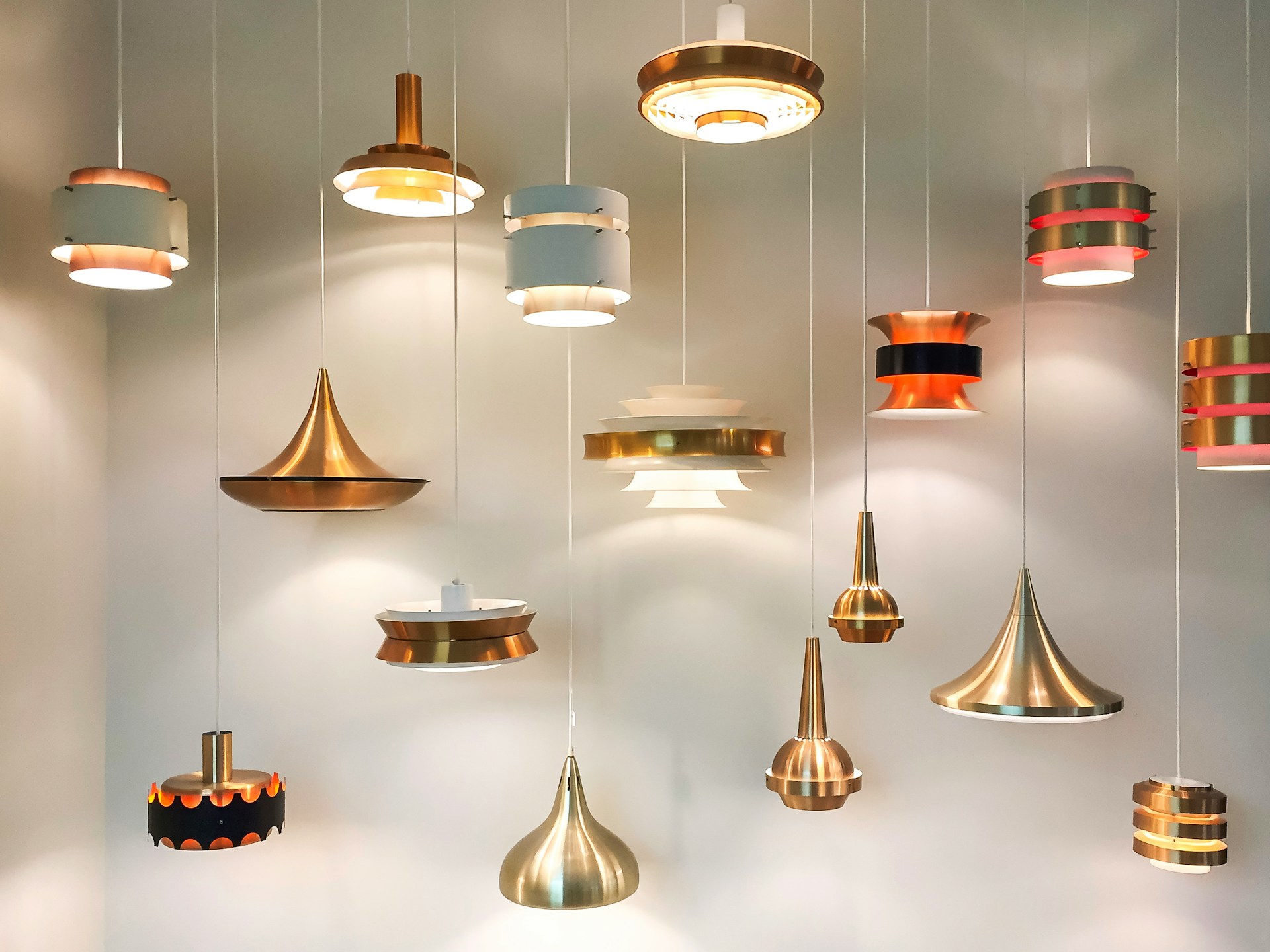Revamping your kitchen doesn’t just involve new cabinets and countertops. The right lighting can redefine aesthetics and functionality, transforming the space into a culinary haven. Embracing smart, energy-efficient lighting solutions maximizes your kitchen's potential, enhancing ambiance while reducing energy costs. Explore innovative options that integrate seamlessly into your renovation plans, providing not just illumination but inspiration for your cooking adventures. Discover how to elevate your kitchen experience today!
Overview of Smart Lighting Solutions
Smart lighting has become a pivotal element in modern kitchen renovations, offering both aesthetic appeal and functional benefits. At its core, smart lighting refers to a system that allows for automated control of lights, often through a mobile app or voice commands, providing convenience and flexibility. This technology is particularly important in kitchens, where lighting needs can vary significantly depending on the task at hand, such as food preparation or dining.
Also to read : Transforming a Vintage Kitchen: Seamlessly Incorporating Smart Home Technology
One of the primary advantages of smart lighting is its energy-efficient nature. Energy-efficient lighting options, such as LED bulbs, not only reduce electricity consumption but also contribute to the overall aesthetics of the kitchen. These lights can be dimmed or brightened to suit different moods and activities, enhancing both the visual appeal and practicality of the space.
Recent advancements in smart lighting technology have introduced features such as motion sensors, which automatically turn lights on or off based on movement, and colour temperature adjustments, which allow users to change the light's hue to mimic natural daylight or create a warm, cosy atmosphere. These innovations make smart lighting a versatile and sustainable choice for any kitchen renovation project.
Also to see : Transforming a Vintage Kitchen: Seamlessly Incorporating Smart Home Technology
Types of Smart Lighting Options
Exploring the diverse types of smart lighting available can transform any kitchen into a modern, efficient space. The right choice enhances both functionality and style, tailored to individual needs and preferences.
LED Lighting
LED lighting stands out as a highly efficient option. Known for its long lifespan and energy-saving properties, LEDs are ideal for kitchens where lights are frequently used. These bulbs provide bright, clear illumination, perfect for detailed tasks like chopping or reading recipes. Additionally, their ability to change colours and dim makes them versatile for setting the right ambience.
Smart Bulbs and Fixtures
Smart bulbs are an integral part of modern kitchen lighting. These bulbs can be controlled remotely via apps or voice commands, offering unparalleled convenience. Many smart bulbs also feature colour-changing capabilities, allowing users to switch between warm and cool tones. This adaptability ensures that the lighting complements any kitchen activity or mood.
Under-Cabinet Lighting
Under-cabinet lighting is a practical solution that provides focused illumination on countertops, enhancing visibility for cooking and preparation tasks. Options include LED strips and puck lights, both of which can be integrated with smart systems for added control. These lights not only improve functionality but also add a sleek, modern look to the kitchen design.
Energy-Saving Technologies
Incorporating energy-saving technologies into kitchen lighting is a game-changer for modern homes. These technologies focus on reducing electricity consumption while maintaining high-quality illumination. One of the most effective methods is the use of LED bulbs, which are designed to consume less power compared to traditional lighting options. Furthermore, the integration of smart home systems allows for seamless control of kitchen lighting, enhancing both efficiency and convenience.
Smart Home Integration
Smart home integration plays a crucial role in optimizing energy usage. By connecting lighting systems to a central hub, homeowners can manage their kitchen lights remotely via smartphones or voice commands. This integration not only simplifies the control process but also enables the automation of lighting schedules. For instance, lights can be programmed to turn off during daylight hours or when no one is present, thereby conserving energy.
Automated Lighting
The benefits of automated lighting extend beyond convenience. By automatically adjusting the intensity and duration of light usage, these systems significantly contribute to reducing energy bills. Motion sensors, a common feature in automated lighting, ensure that lights are only on when needed, preventing unnecessary energy wastage. Additionally, the ability to customise lighting settings to match daily routines further enhances energy efficiency, making automated lighting a practical choice for any energy-conscious homeowner.
Case Studies and Before-and-After Examples
Exploring real-life kitchen lighting makeover projects can offer valuable insights and design inspiration for those considering a renovation. These examples highlight the transformative power of smart lighting solutions.
Successful Kitchen Renovations
Several homeowners have successfully integrated smart lighting into their kitchen renovations, resulting in both aesthetic and functional improvements. For instance, one project involved replacing outdated fluorescent fixtures with modern LED strips and smart bulbs. The result was a brighter, more energy-efficient space that enhanced the overall kitchen experience.
Visual Transformations
Before-and-after images vividly illustrate the impact of smart lighting. In one renovation example, a dim, under-lit kitchen was transformed with the addition of under-cabinet lighting and adjustable colour temperature bulbs. The new lighting scheme not only improved visibility but also added a contemporary flair to the kitchen design.
Homeowner Insights
Homeowners who have embraced smart lighting often share positive feedback about their choices. Many appreciate the convenience of controlling lights through voice commands or smartphone apps. Additionally, the ability to customise lighting settings to suit different activities or moods has been a significant advantage, making their kitchens more enjoyable and versatile spaces.
Product Recommendations
Selecting the right lighting products is crucial for achieving a balance between style and functionality in kitchen renovations. With a plethora of options available, it’s essential to consider both eco-friendly options and reliability from trusted brands.
Recommended Smart Lighting Products
When it comes to smart lighting, Philips Hue and LIFX stand out for their innovative features. Philips Hue offers a wide range of bulbs, including those with adjustable colour temperatures and integration with smart home systems. LIFX, on the other hand, provides high brightness and vibrant colours without requiring a hub, making it a convenient choice for those new to smart lighting.
Eco-Friendly Lighting Options
For those prioritising sustainability, LED lighting remains the top choice. Not only do LEDs consume less energy, but they also have a longer lifespan compared to traditional bulbs. Brands like Cree and GE offer LED options that are both energy-efficient and stylish, ensuring reduced electricity bills and minimal environmental impact.
Comparison of Trusted Brands
Philips Hue, LIFX, Cree, and GE are among the trusted brands that dominate the smart lighting market. Philips Hue is renowned for its compatibility with various smart home systems, while LIFX is praised for its ease of use and vibrant colour options. Cree and GE focus on providing affordable, eco-friendly options without compromising on quality. Each brand offers unique features, allowing homeowners to choose based on their specific needs and preferences.
Installation Tips and Cost Comparisons
Embarking on the journey of integrating smart lighting into your kitchen can be both exciting and daunting. To ease the process, consider these installation tips and cost insights.
Step-by-Step Installation Tips
Begin by assessing your kitchen’s current lighting layout and identifying areas where smart lighting can enhance functionality and aesthetics. For a seamless installation, follow these steps:
- Plan Your Layout: Determine the number of smart bulbs or fixtures needed based on your kitchen's size and design.
- Choose Compatible Devices: Ensure your smart bulbs and fixtures are compatible with your existing smart home systems.
- Install Smart Bulbs: Replace traditional bulbs with smart ones, ensuring they are securely fitted in their sockets.
- Set Up Control Systems: Use mobile apps or smart home hubs to connect and control your lighting system.
- Customise Settings: Adjust brightness, colour temperature, and automation settings to suit your daily needs.
Cost Comparisons
When considering the cost of smart lighting, it's essential to compare it with traditional options. While the initial investment in smart lighting may be higher due to the technology involved, the long-term savings in energy bills and maintenance can outweigh these costs. Traditional lighting may seem cheaper upfront but often incurs higher electricity costs over time.
Budget-Friendly Recommendations
For those seeking budget-friendly options, consider starting small. Implement smart lighting in high-use areas like countertops or islands first. Brands such as Philips Hue offer starter kits that include multiple bulbs and a hub, providing a cost-effective way to begin your smart lighting journey. Additionally, opting for energy-efficient LED bulbs can further reduce costs while maintaining quality and performance.
Potential Energy Savings
Exploring the energy savings potential of smart lighting solutions can reveal significant opportunities for cost reduction and enhanced efficiency in kitchen renovations. By transitioning to smart lighting, homeowners can experience a marked decrease in energy consumption, translating into lower electricity bills over time.
One of the most compelling aspects of smart lighting is its ability to deliver substantial cost reduction. For instance, replacing traditional incandescent bulbs with LED smart bulbs can reduce energy use by up to 75%. Over time, this shift not only pays for the initial investment but also results in considerable savings. Real-world examples have shown that households can save hundreds of pounds annually by optimising their lighting systems.
To maximise energy efficiency, consider implementing the following tips in your kitchen lighting plan:
- Utilise Motion Sensors: Automate lighting to only activate when movement is detected, ensuring lights are off when not in use.
- Schedule Lighting: Use smart home systems to schedule lights to turn off during daylight or when the kitchen is unoccupied.
- Adjust Brightness Levels: Tailor the brightness to the task at hand, reducing unnecessary energy use during less demanding activities.
By focusing on these strategies, homeowners can not only enhance their kitchen's functionality and aesthetics but also achieve significant energy savings.






